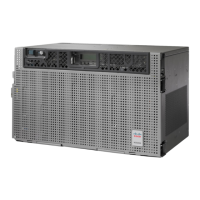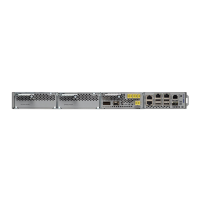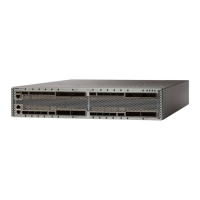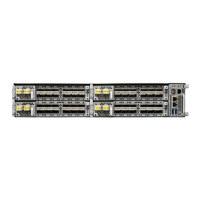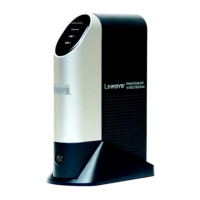If no LOS-P (OTS) alarm is present on the COM port of the 80-WXC-C card that is configured in the DMX
mode and a LOS-P (OCH) alarm is raised on the wavelengths passing through the COM port, it can indicate
incorrect cabling of the COM and MON ports. In this case, swap the fiber between the COM and MON ports
to clear the alarm
Note
Step 5 If the cabling is good, verify that each involved optical signal source, including TXP, MXP or ITU-T line card trunk
transmit ports, is in the IS (or Unlocked) administrative state. To do this, click the following tabs as appropriate:
• For the ADM-10G card, click the Provisioning > Line > Ports tabs.
• For the TXP_MR_10G card, click the Provisioning > Line > SONET (or Provisioning > Line > SDH) tabs.
• For the TXP_MR_10E card, click the Provisioning > Line > SONET (or Provisioning > Line > SDH) tabs.
• For the TXP_MR_2.5G card, click the Provisioning > Line > SONET (or Provisioning > Line > SDH) tabs.
• For the TXPP_MR_2.5G card, click the Provisioning > Line > SONET (or Provisioning > Line > SDH) tabs.
• For the MXP_MR_2.5G card, click the Provisioning > Line > SONET (or Provisioning > Line > SDH) tabs.
• For the MXPP_MR_2.5G card, click the Provisioning > Line > SONET (or Provisioning > Line > SDH) tabs.
• For the MXP_2.5G_10E card, click the Provisioning > Line > Trunk tabs.
• For the MXP_2.5G_10G card, click the Provisioning > Line > SONET (or Provisioning > Line > SDH) tabs.
If the port administrative state is not IS (or Unlocked), choose IS (or Unlocked), from the Admin state drop-down list.
If the alarm does not clear, continue with Step 9, on page 287.
If the LOS-P (OCH) alarm applies to a 32WSS-O passthrough port, it means that a single optical source is
not directly connected to the port. In this case, follow the general troubleshooting rules given in Network
Level (Internode) Troubleshooting to identify any other alarm upstream to the logical signal flow that could
be the root cause for the outstanding alarm.
Note
Step 6 If the signal source is in IS (or Unlocked) administrative state, use an optical test set to verify that the transmit laser is
active. For specific procedures to use the test set equipment, consult the manufacturer.
Step 7 If the laser is active, compare the card’s provisioned transmit optical power value with the expected range in the
Provision Transponder and Muxponder Cards chapter of the Configuration guide. To display the provisioned transmit
optical power values, click the following tabs as appropriate:
• For the ADM-10G card, click Performance > Optics PM > Current Values tabs.
• For the TXP_MR_10G card, click the Performance > Optics PM > Current Values > Trunk Port tabs.
• For the TXP_MR_10E card, click the Performance > Optics PM > Current Values > Trunk Port tabs.
• For the MXP_2.5G_10E card, click the Performance > Optics PM > Current Values > Trunk Port tabs.
• For the MXP_2.5G_10G card, click the Performance > Optics PM > Current Values > Trunk Port tabs.
Step 8 Use a standard power meter to measure actual transmit optical power for the following cards as applicable:
• GE-XP
• 10GE-XP
• ADM-10G
Cisco NCS 2000 series Troubleshooting Guide, Release 11.0
286
Alarm Troubleshooting
Clear the LOS-P (OCH) Alarm
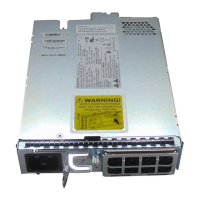
